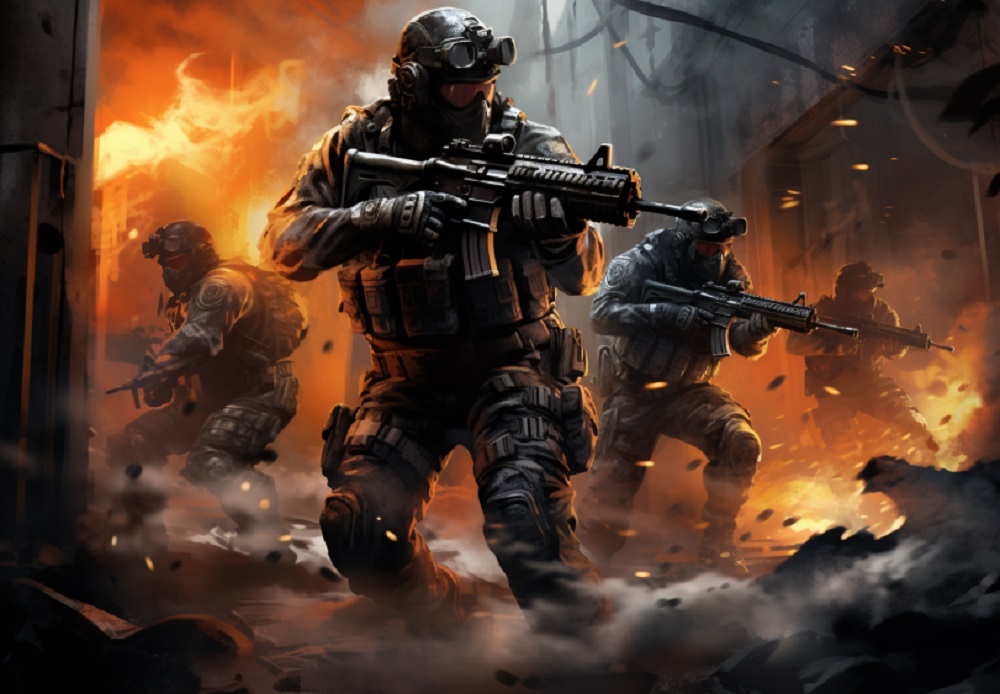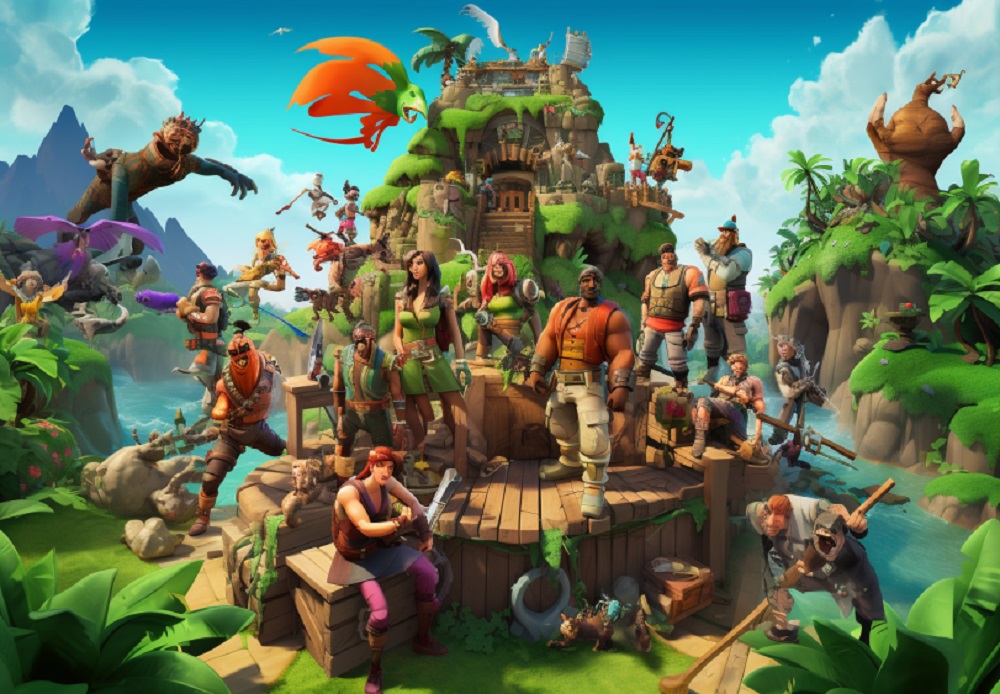How to Make a Multiplayer Game
1. Introduction
Creating a multiplayer game involves more than just designing compelling gameplay mechanics. To deliver a truly engaging experience, developers must incorporate online and social features that foster connected gameplay. In this comprehensive guide, we will explore the key considerations and steps involved in building a multiplayer game with robust online and social functionalities.
2. Understanding the Multiplayer Landscape
Before diving into development, it's essential to understand the multiplayer landscape. Different types of multiplayer experiences exist, ranging from local co-op and split-screen gameplay to fully online multiplayer environments. Assessing the target audience and the desired gameplay experience will help determine the right multiplayer approach for your game.
3. Choosing the Networking Architecture
Selecting the appropriate networking architecture is crucial for a smooth multiplayer experience. Two common approaches are peer-to-peer (P2P) and client-server. P2P allows players to connect directly, reducing server costs but potentially leading to synchronization issues. Client-server architecture offers more control and reliability but requires dedicated servers.
4. Implementing Real-time Gameplay
Real-time gameplay is a fundamental aspect of multiplayer games. To achieve this, developers must design and optimize networking code to minimize latency and provide a responsive experience. Techniques such as client-side prediction, server reconciliation, and lag compensation help synchronize game states and reduce the impact of network latency.
5. Creating Matchmaking Systems
Matchmaking systems are crucial for connecting players and ensuring balanced and enjoyable matches. They consider factors like skill level, player preferences, and location to create fair and engaging matchups. Developers can implement various matchmaking algorithms, such as Elo rating systems or skill-based matching, depending on the game's requirements.
6. Building Multiplayer Game Modes
Multiplayer games often offer different game modes to cater to various player preferences. From cooperative modes to competitive PvP battles, each mode requires careful consideration of gameplay mechanics, balance, and the overall multiplayer experience. Offering a diverse range of game modes enhances replayability and keeps players engaged.
7. Enabling Online Communication
Effective communication is vital for multiplayer games, enabling players to strategize, coordinate, and socialize. Implementing in-game chat systems, voice chat, or both allows players to communicate seamlessly. Additionally, incorporating features like emotes, gestures, and customizable player profiles enhances the social aspect of the game.
8. Integrating Leaderboards and Rankings
Leaderboards and rankings provide a competitive element to multiplayer games, motivating players to improve their skills and achieve higher rankings. Implementing robust leaderboards that display player statistics, match histories, and rankings fosters healthy competition and encourages players to strive for mastery.
9. Supporting Player Progression and Rewards
Rewarding player progress and providing a sense of achievement is crucial for player retention. Incorporating leveling systems, experience points, and unlockable rewards creates a sense of progression. Additionally, offering cosmetic items, character customization options, and in-game currency allows players to personalize their experience and further incentivizes engagement.
10. Implementing Anti-Cheat Measures
Maintaining a fair and cheat-free environment is essential for multiplayer games. Implementing anti-cheat measures, such as cheat detection algorithms, server-side validation, and player reporting systems, helps prevent cheating and ensures a level playing field. Regular updates and active community management are also essential to address new cheating methods that may arise.
11. Supporting Cross-Platform Play
Cross-platform play has become increasingly popular, allowing players on different devices and platforms to connect and play together. Implementing cross-platform support requires careful consideration of technical challenges, compatibility issues, and user experience across different platforms. However, it can significantly expand the player base and improve the overall multiplayer experience.
12. Handling Server Infrastructure and Scaling
As the player base grows, maintaining a reliable server infrastructure becomes critical. Developers must consider factors like server capacity, load balancing, and scalability to ensure smooth gameplay even during peak times. Cloud-based solutions and server hosting services can help simplify server management and scaling processes.
13. Integrating Social Features
Social features add depth to multiplayer games, fostering community building and player engagement. Implementing friend systems, clans or guilds, social feeds, and player-to-player interactions create opportunities for collaboration and competition. Social features enhance the overall multiplayer experience and encourage players to form lasting connections within the game.
14. Balancing Gameplay for Multiplayer
Balancing gameplay in multiplayer games is a delicate task. It involves continuously assessing player feedback, monitoring performance data, and making iterative adjustments to ensure fairness and a satisfying experience for all players. Balancing factors such as character abilities, weapons, and game mechanics ensures that no single player or strategy dominates the gameplay.
15. Testing and Iterating
Thorough testing and iteration are crucial for the success of a multiplayer game. Conduct extensive playtesting, both internally and with a community of beta testers, to identify and address any bugs, connectivity issues, or balancing problems. Regular updates and community feedback help refine the game, enhance the multiplayer experience, and ensure long-term player satisfaction.
16. Implementing Player Customization
Player customization allows individuals to express their unique identities within the game. Integrating features that enable players to customize their avatars, appearance, and personal spaces adds depth and personalization to the multiplayer experience. Offering a wide range of customization options, including clothing, accessories, and cosmetic upgrades, enhances player engagement and fosters self-expression.
17. Designing Cooperative Gameplay
Cooperative gameplay encourages collaboration and teamwork among players. Implementing cooperative game modes, missions, or raids allows players to join forces and work together to overcome challenges. Incorporating features like shared objectives, complementary abilities, and communication tools enhances the cooperative experience and encourages social interaction among players.
18. Creating Competitive Tournaments
Organizing competitive tournaments within the game adds an extra layer of excitement and engagement. Implementing tournament systems, leaderboards, and structured competitive gameplay allows players to test their skills against others and compete for valuable rewards or recognition. Offering regular tournaments with varying formats and difficulty levels ensures ongoing competition and a thriving multiplayer community.
19. Supporting Esports and Spectator Mode
For games with a competitive focus, supporting esports and spectator modes can significantly enhance the multiplayer experience. Implementing features that allow players to spectate ongoing matches, follow professional tournaments, and learn from top players promotes community engagement and builds a dedicated fan base. Providing tools for shoutcasters and commentators adds further depth to the esports ecosystem.
20. Continuous Support and Community Engagement
Building a successful multiplayer game requires ongoing support and community engagement. Regular updates, bug fixes, and content expansions keep the game fresh and maintain player interest. Establishing official forums, social media presence, and in-game feedback channels enables developers to actively communicate with the player base, gather feedback, and address concerns promptly.
By following these guidelines and understanding the intricacies of building online and social features, developers can create immersive and engaging multiplayer games that offer connected gameplay experiences to players worldwide.






